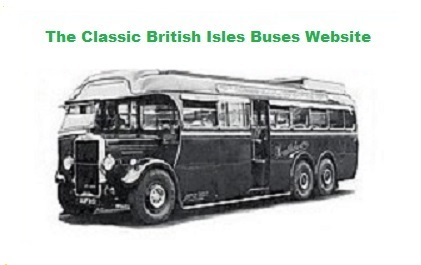

The Classic British Isles Buses Website
Victoria coach station memories (by Dick Gilbert)
Last updated 30 August 2024
Email Events diary Past events list Classified ads Links to other websites Classic U.K. Buses Classic Irish Buses Classic Manx Buses
| Victoria Coach Station photos 1960-1961 | Sussex bus photographs 1960-1961 | Assorted bus photographs 1961-1997 |
This page contains a selection of photographs that I took at Victoria Coach Station, London, in 1961 and 1962. I'm afraid they were all black and white, and not of great quality, but then I was only a beginner at the photography game and had a poor camera with poor film. Well, at least they survived, and I hope you enjoy having a browse. Surprisingly (for this site!) only one of the vehicles shown is a halfcab, which shows that I am not a TOTAL bigot. The colour scheme, by the way, represents Tilling (of which more anon).
Victoria was THE venue for the coach enthusiast at the time, and I believe it still attracts interested folk today. Vehicles came and went in large numbers from all over the country, and the buildings and layout remained virtually unchanged from its heydays in the 1930s. To open the bidding, here is a general view of the arrivals area in 1962.
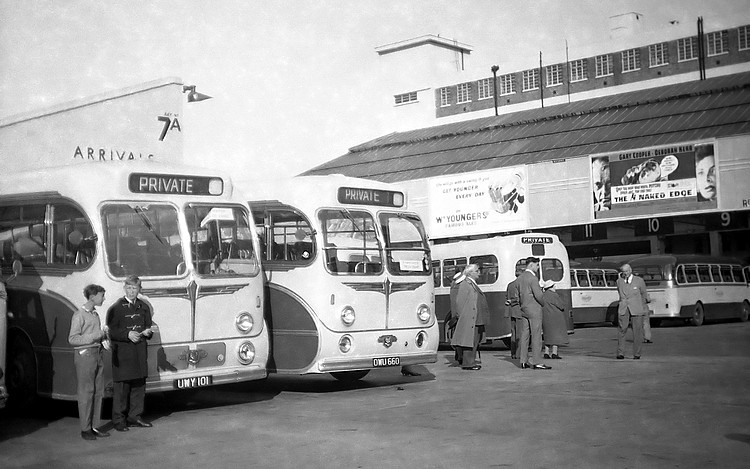
From left to right, notice the two spotters busily recording the activity. Victoria had no problem with us urchins, so long as we behaved ourselves. Behind them are two Burlingham Seagulls from the fleet of Mexborough and Swinton in Yorkshire.
In fact, this is a complete class, because nos. 100 (OWU 660 on the right) and 101 (UWY 101 on the left) represented the whole batch. They were Leyland Tiger Cub PSUC1s built in the mid 1950s and the livery was green and cream. Neither survives. In the centre of the picture is the back of an unidentified Bristol, and some visitors from Maidstone and District visible on the right complete a typical scene from the period.
This was a time of major fleet updates, and new express vehicles were starting to appear on the scene, such as the Standerwick Gay Hostess Leyland Atlantean shown below.
Standerwick was part of Ribble, and they ran express motorway services from the north-west using the PDR1/1 Atlanteans with reclining seats, a toilet, refreshments, and air suspension (on the front wheels only).
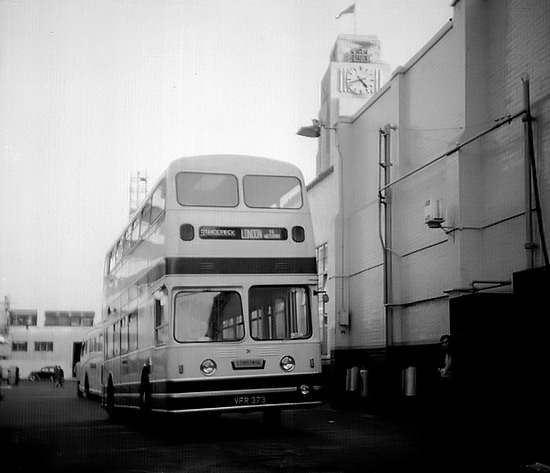
The 50-seat body is by Weymann. No. 31 (VFR 373) was built in 1961 and is shown taking a short breather in 1962. Apart from the Maidstone and District lowbridge examples, these were the first Atlanteans I had seen, and I thought they were pretty glamorous. Although I am not really a big fan of such new-fangled machinery I have to say that I think it's a shame that none of this batch survives to the present day.
But then...Jonathan Cadwallader emailed me in October 2013 to point out that the Gay Hostess is not quite extinct after all! He told me "I'm involved with the Ribble Vehicle Preservation Trust and we do in fact have a survivor. In very poor condition, SFV 421, Standerwick 25, will require a sum well into 6 figures to put matters right, but at least it exists and stranger things have happened. Much more here."
Thanks for that good news Jonathan, and I wish the restoration (when it eventually takes place) the very best of luck.
A close-up of one of the Mexborough coaches.
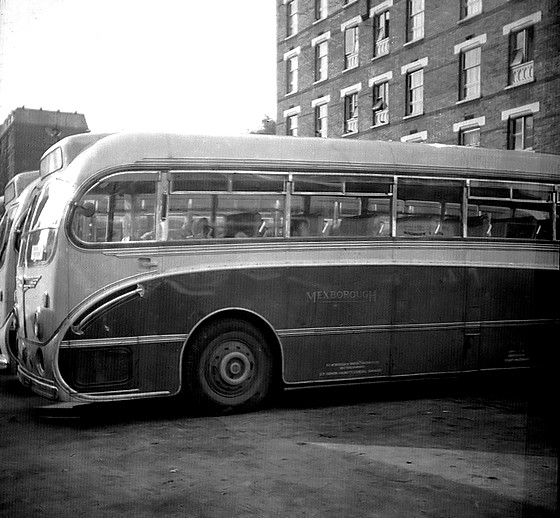
This is no. 100 (OWU 660), one of the Mexborough and Swinton coaches shown at the top of the page - Leyland Tiger Cubs with 41-seat Burlingham Seagull bodies, in a very smart green and cream. Built in 1955 it was relegated to one- man operation in 1968 with bus seats and a sliding door. A year later it became Yorkshire Traction no. 192 when the two companies were merged, eventually being retired in 1971 and ending up with a scout group.
A new coach from North Western.
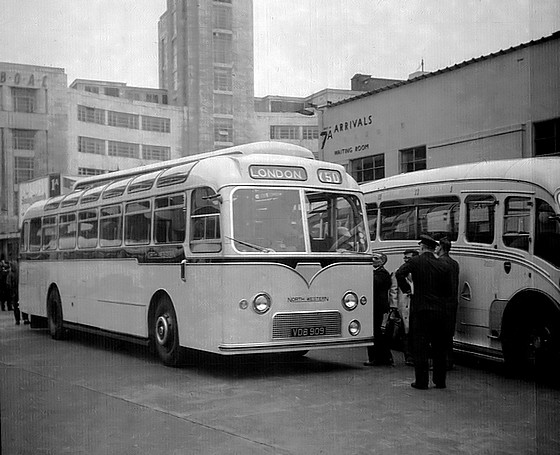
In 1962 North Western acquired a batch of ten 36-foot Alexander-bodied Leyland Leopards, which were among the very first Leopards to enter service. This sparkling arrival is no. 909 (VDB 909).
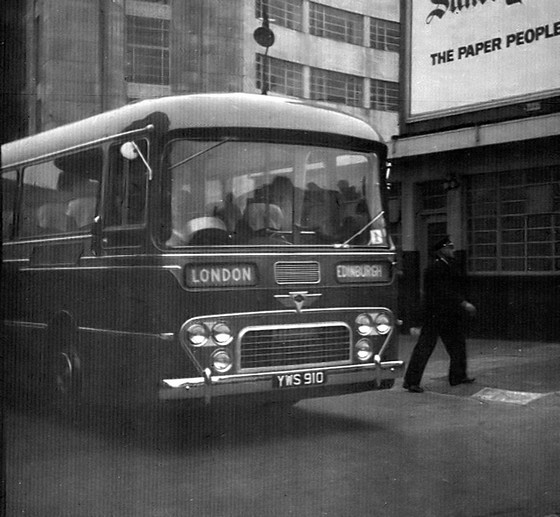
Having travelled even further than the North Western Leopard above, this is a brand new Scottish Omnibuses AEC Reliance, no. B910 (YWS 910) with an Alexander Y-type body, one of a large number acquired around that time. It was unusual in that most Y-types had a destination box over the front windscreen, but this one had the blinds beneath.
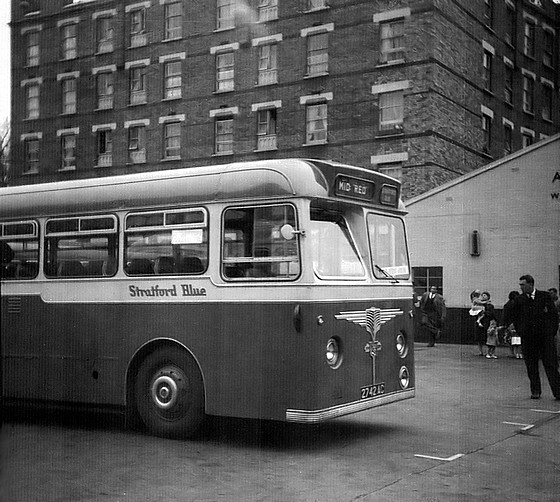
A shame this isn't in colour. This Tiger Cub with a Willowbrook dual-purpose body is Stratford Blue no. 42 (2742 AC), new in 1959 and remaining with them until 1971. The destination blind says Mid Red, so it seems to be on hire.
P>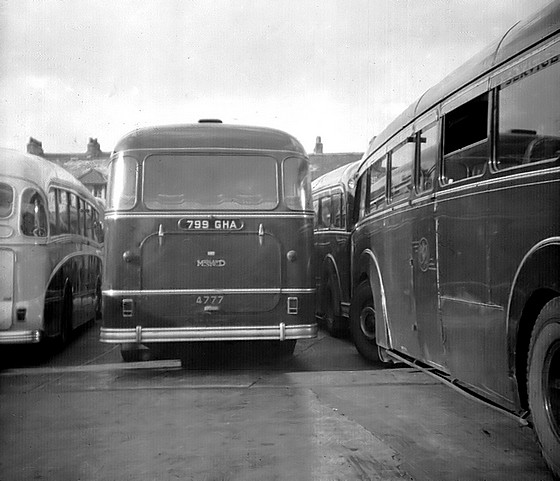
...and talking of Midland Red... As you may have noticed, I seemed to prefer to point my camera lens at the newer products arriving at Victoria, rather than the older ones. In some ways that's a bit of a shame, because the two coaches on the right look far more intriguing now than the vehicle I obviously intended to feature here. This is the back end of Midland Red 4777 (777 GHA), one of a batch of eight CS5 coaches, a high-speed version of the C5. At least it should have been 777 GHA, but it was registered out of sequence (as 799 GHA), to the rest of the batch, for some unknown reason.
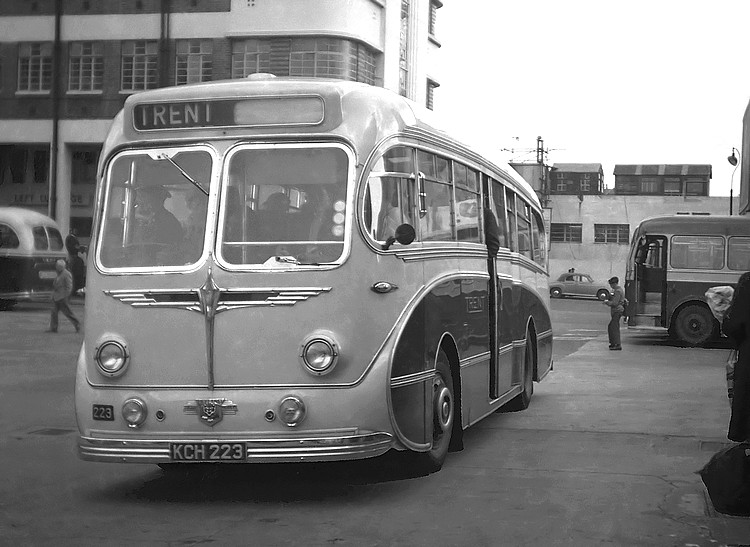
From the Midlands, here is Trent Motor Traction No.223. KCH 223 was a Leyland Tiger Cub PSUC1/2 with Burlingham 37-seat coachwork, built in 1957. It was one of a batch of seven which followed on from a 1955 delivery of six similar vehicles. This is the Burlingham Seagull body, basically similar to the Mexborough examples above, and very common during the early 1960s.
Trent operated from Nottingham and Derby, and were almost exclusively buying Leyland products at the time. None of this batch survives today, and it's surprising how few Seagulls went into preservation considering the large numbers that were produced at the time.
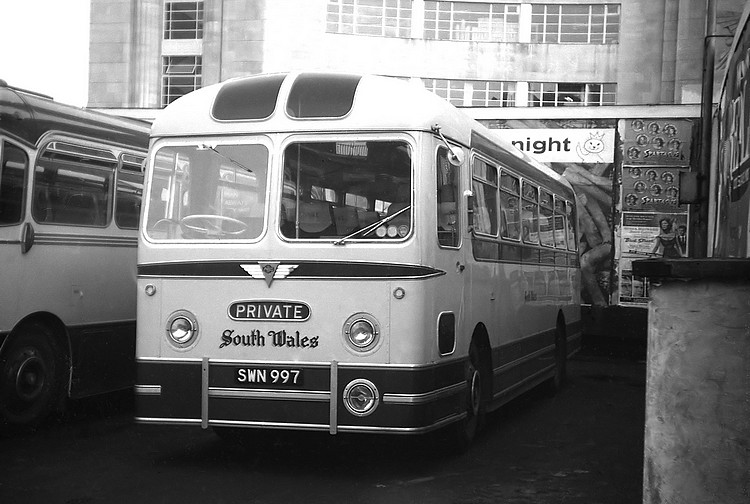
This is South Wales Transport Co. no. 1038 from Swansea. SWN 997 was an AEC Reliance built in 1959, with a Weymann C41F body very similar to the Fanfare design, and is seen in February 1962. When brand new, this example took part in the 1959 British Coach Rally in Brighton, but didn't win any prizes. South Wales had four of these (1038-1041), later allocated to bus services, and repainted in bus livery, with their fleet numbers changing to 849-852. Once again, none of them survive today, and the Fanfare design is virtually just a memory.
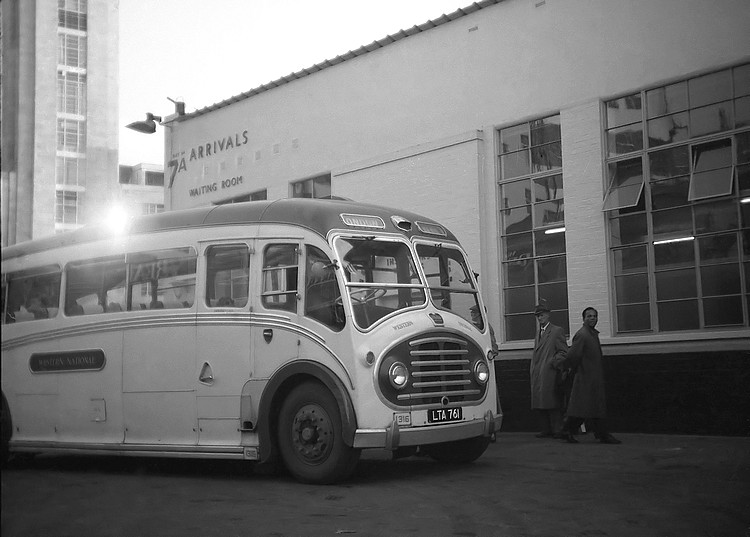
Next, seen in 1962, is one of ECW's less attractive creations. This beastie is Western National Omnibus no. 1316 (LTA 761), a Bristol LWL6B built in 1951 with a gloomy Eastern Coach Works FC37F body. It came from a batch of 40 (mixed Southern National and Western National), of which twenty six were 8 feet wide and looked like this. The other fourteen - all 7'6" wide - had halfcab coach bodies by Duple. None of these monsters survive, which doesn't break my heart.
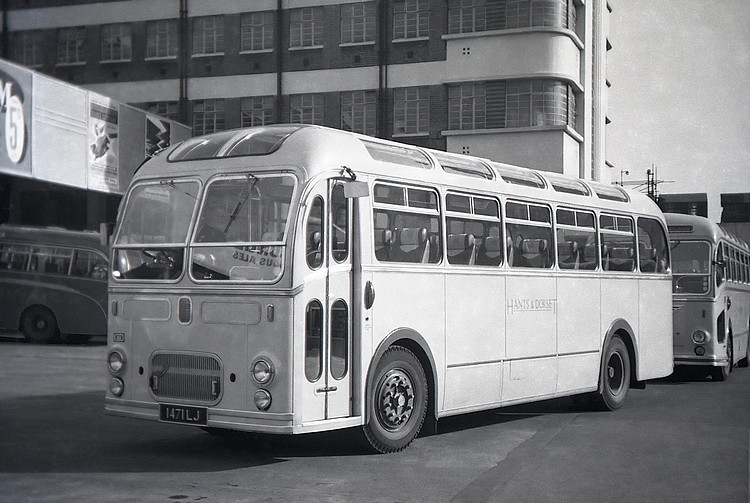
Here comes Hants and Dorset No.879.....A very typical Bristol MW6G coach, 1471 LJ is seen arriving at # Victoria Coach Station in 1961 when brand new. The 30-seat body was (of course) by Eastern Coach Works, and this standard 8-foot wide design could be seen all over the country. The vehicle was one of a batch of twenty four coaches, of which none survive to the present day. This coach looked factory-fresh when it rolled in the gate, and it was typical of many operators who would send their best and newest vehicles on the London runs.
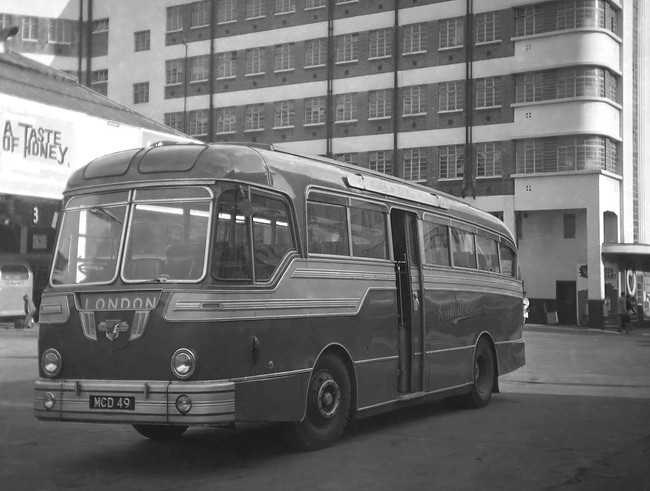
Up from the south coast. Southdown were major users of Victoria Coach Station from its inception. This Leyland Royal Tiger no. 1649, allocated to Hilsea depot, was the last of a small batch of five for Southdown, and has just disembarked its passengers. The heavyweight 41-seat coachwork style was known as the Duple Coronation Ambassador, and was only built during Coronation year - 1953. The coach was sold in 1966.
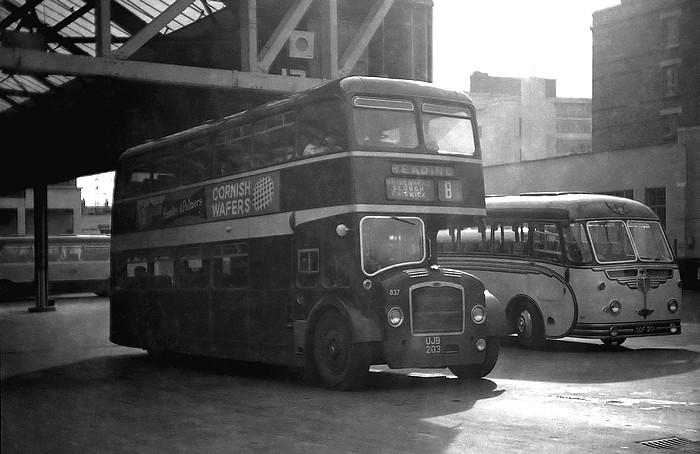
Double deckers were not common at Victoria, particularly those that appeared to be perfectly ordinary buses, but Thames Valley were the exception. Their route B ran between Reading and Victoria from 1960, and they used new 30 foot long FLF6G Lodekkas fitted with 65 coach seats. This is no. 837 (UJB 203) in 1962, one of five, none of which survive in the U. K., but who knows....
Behind it is one of the distinctive AEC Reliances from Black and White Motorways Ltd of Cheltenham. No. 201 (SDF 201) was one of ten Willowbrook-bodied examples built in 1956, none of which survive.
Now the reason why this page is in the black and cream Tilling livery.
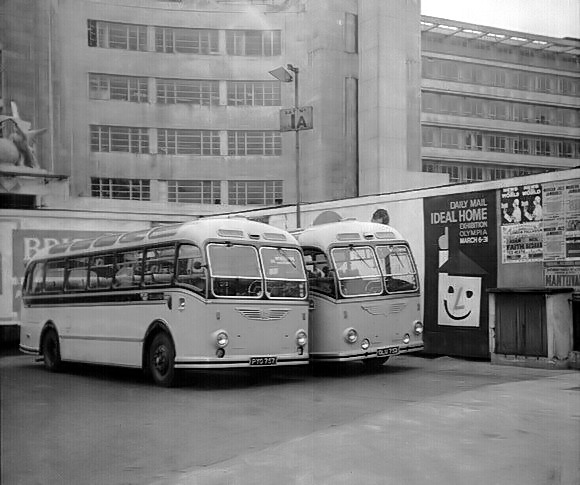
Two vehicles from the fleet of Tillings Transport seen at Victoria in 1962. Both are Bristol LS6Bs with ECW bodies; on the left is PYO 757 built in 1956, and on the right is OLU 752 from another batch built in 1954. There are no survivors from either batch. The firm of Thomas Tilling dates back to a staggering 1847 when he started in the horse bus business. By the 1960s, although the main garage remained at Kings Cross, control of the company was being transferred to Eastern National. By the way, according to the posters, Adam Faith and Neil Sedaka were playing at the London Palladium.
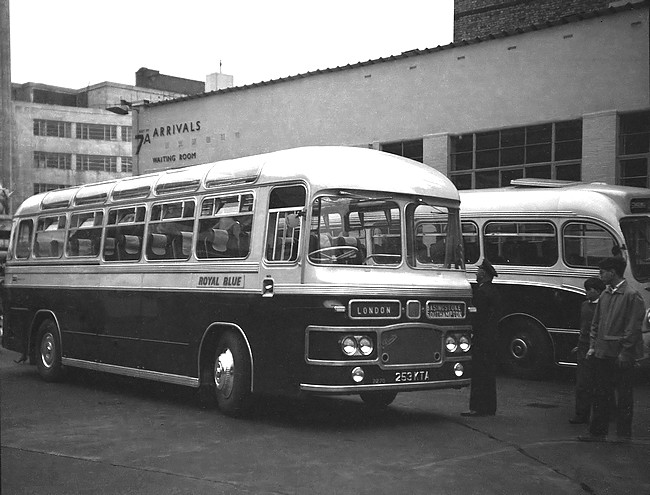
Finally, another new coach arrives. Fresh from the West Country comes Royal Blue 2270 (253 KTA), a brand spanking new Bristol MW6G with stylish ECW 39-seat bodywork, apparently attracting the admiration of spotters and staff alike. The reason I have left this one until last, is because it came from a batch of 39 coaches of which six are reputed to survive(!!), including this one which is said to live in Leatherhead.
That's it. I hope you enjoyed the visit. If anyone has better pics (they couldn't be worse!) or stories of Victoria memories that they would like to share, I would be happy to give them a good home.
If you want to see more, visit this website for a far better collection of pictures from Victoria Coach Station.
Email Events diary Past events list Classified ads Links to other websites Classic U.K. Buses Classic Irish Buses Classic Manx Buses